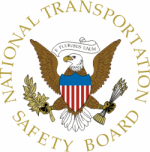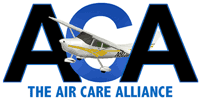Sat, Jun 12, 2010
Board Says Passengers Should Be Told They Are Not Flying
Commercial
 The NTSB has issued three
recommendations directed specifically at the Air Care Alliance
which could have ramifications for any organization offering
charitable flights.
The NTSB has issued three
recommendations directed specifically at the Air Care Alliance
which could have ramifications for any organization offering
charitable flights.
The board recommends that The Air Care Alliance require
voluntary pilot organizations to verify pilot currency before every
flight. It further says that the voluntary pilot organization
should be required to inform passengers, at the time of inquiry
about a flight, that the charitable medical flight would not be
conducted under the same standards that apply to a commercial
flight (such as under 14 Code of Federal Regulations Part 121 or
Part 135).
The final recommendation is that all voluntary pilot
organizations to work with ACA and other charitable medical
transport organizations to develop and disseminate written safety
guidance, best practices, and training material for volunteer
pilots who operate charitable patient transport flights under 14
Code of Federal Regulations Part 91. It further would require all
voluntary pilot organizations to implement those best practices and
training. The information should address, at a minimum,
aeronautical decision-making; proper preflight planning; pilot
qualification, training, and currency; and self-induced
pressure.
 The recommendations stem from four
accidents in 2007 and 2008 where in all but one case a passenger on
board a charitable medical flight was killed. The pilot was killed
in the fourth incident en route to picking up his passengers. All
flights were arranged by ACA members, and in each case, pilot
proficiency was cited either the probable cause or a contributing
factor to the accident. In its letter outlining the recommendations
to the ACA, the NTSB noted that the pilots in these accidents were
experienced and likely should have been aware of the risks
associated with taking off with excessive tail or crosswinds or
flying into deteriorating weather. Although the NTSB could not
determine why these experienced pilots made the inappropriate
decisions that led to the accidents, the pilots may have been
subject to self-induced pressure to start or complete the flight
because of their passengers’ serious medical conditions.
The recommendations stem from four
accidents in 2007 and 2008 where in all but one case a passenger on
board a charitable medical flight was killed. The pilot was killed
in the fourth incident en route to picking up his passengers. All
flights were arranged by ACA members, and in each case, pilot
proficiency was cited either the probable cause or a contributing
factor to the accident. In its letter outlining the recommendations
to the ACA, the NTSB noted that the pilots in these accidents were
experienced and likely should have been aware of the risks
associated with taking off with excessive tail or crosswinds or
flying into deteriorating weather. Although the NTSB could not
determine why these experienced pilots made the inappropriate
decisions that led to the accidents, the pilots may have been
subject to self-induced pressure to start or complete the flight
because of their passengers’ serious medical conditions.
The NTSB has asked for an initial response from the ACA within
90 days addressing the actions that have been taken, what plans
have been made to implement the recommendations.
More News
Witness Reported The Airplane Was Flying Low And Was In A Left Bank When It Struck The Power Line Analysis: The pilot was on final approach to land when the airplane collided with >[...]
How To Get A Story On Aero-TV News/Feature Programming How do I submit a story idea or lead to Aero-TV? If you would like to submit a story idea or lead, please contact Jim Campbel>[...]
From 2012 (YouTube Edition): A Segment Of The Sport Aviation World That Truly Lives "Low And Slow" Pity the life of ANN's Chief videographer, Nathan Cremisino... shoot the most exc>[...]
Aero Linx: International Business Aviation Council (IBAC) IBAC promotes the growth of business aviation, benefiting all sectors of its industry and in all regions of the world. As >[...]
Execute Missed Approach Instructions issued to a pilot making an instrument approach which means continue inbound to the missed approach point and execute the missed approach proce>[...]
 NTSB Final Report: Cozy Cub
NTSB Final Report: Cozy Cub ANN FAQ: Contributing To Aero-TV
ANN FAQ: Contributing To Aero-TV Classic Aero-TV: Seated On The Edge Of Forever -- A PPC's Bird's Eye View
Classic Aero-TV: Seated On The Edge Of Forever -- A PPC's Bird's Eye View ANN's Daily Aero-Linx (04.29.25)
ANN's Daily Aero-Linx (04.29.25) ANN's Daily Aero-Term (04.29.25): Execute Missed Approach
ANN's Daily Aero-Term (04.29.25): Execute Missed Approach




